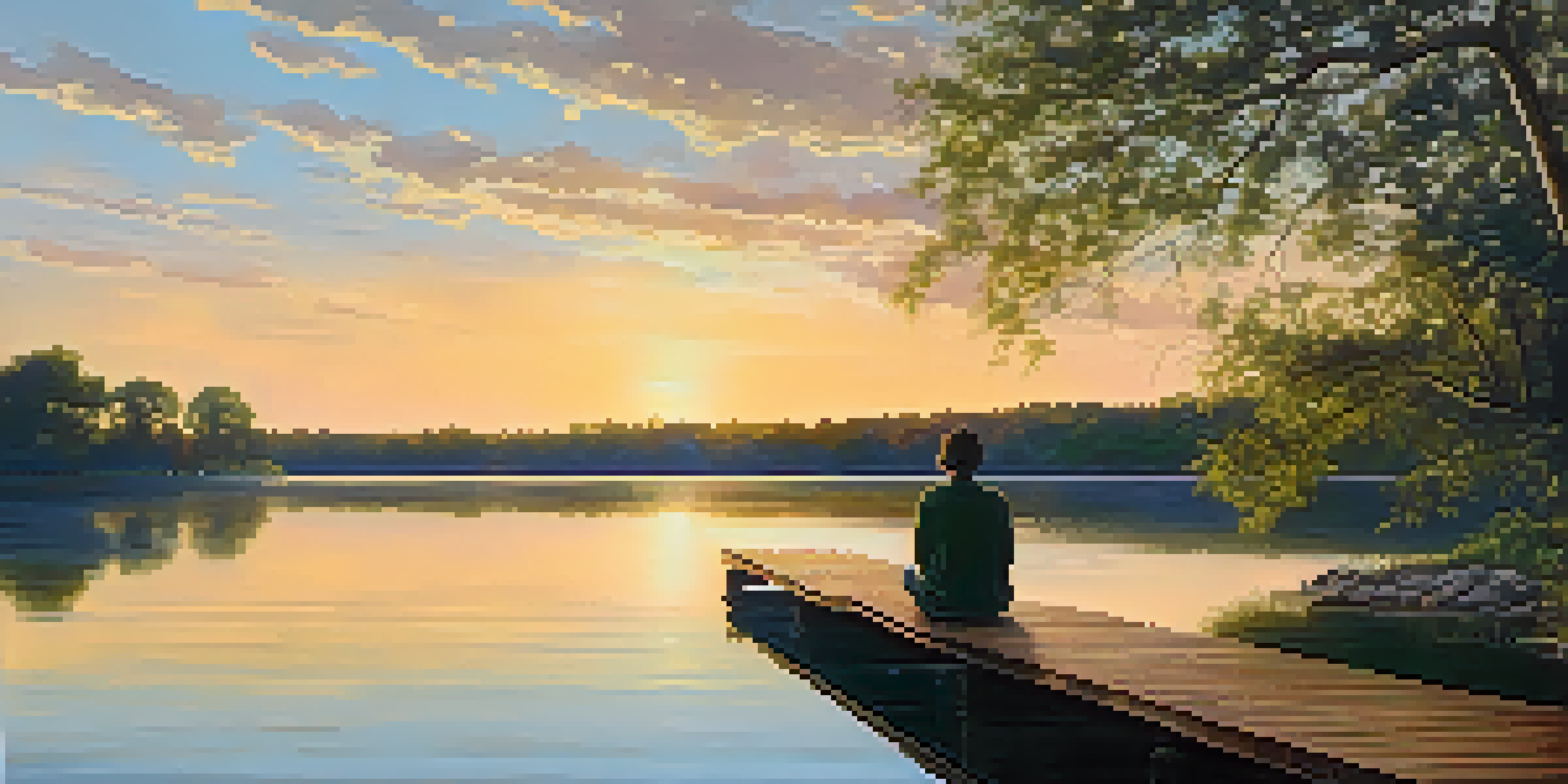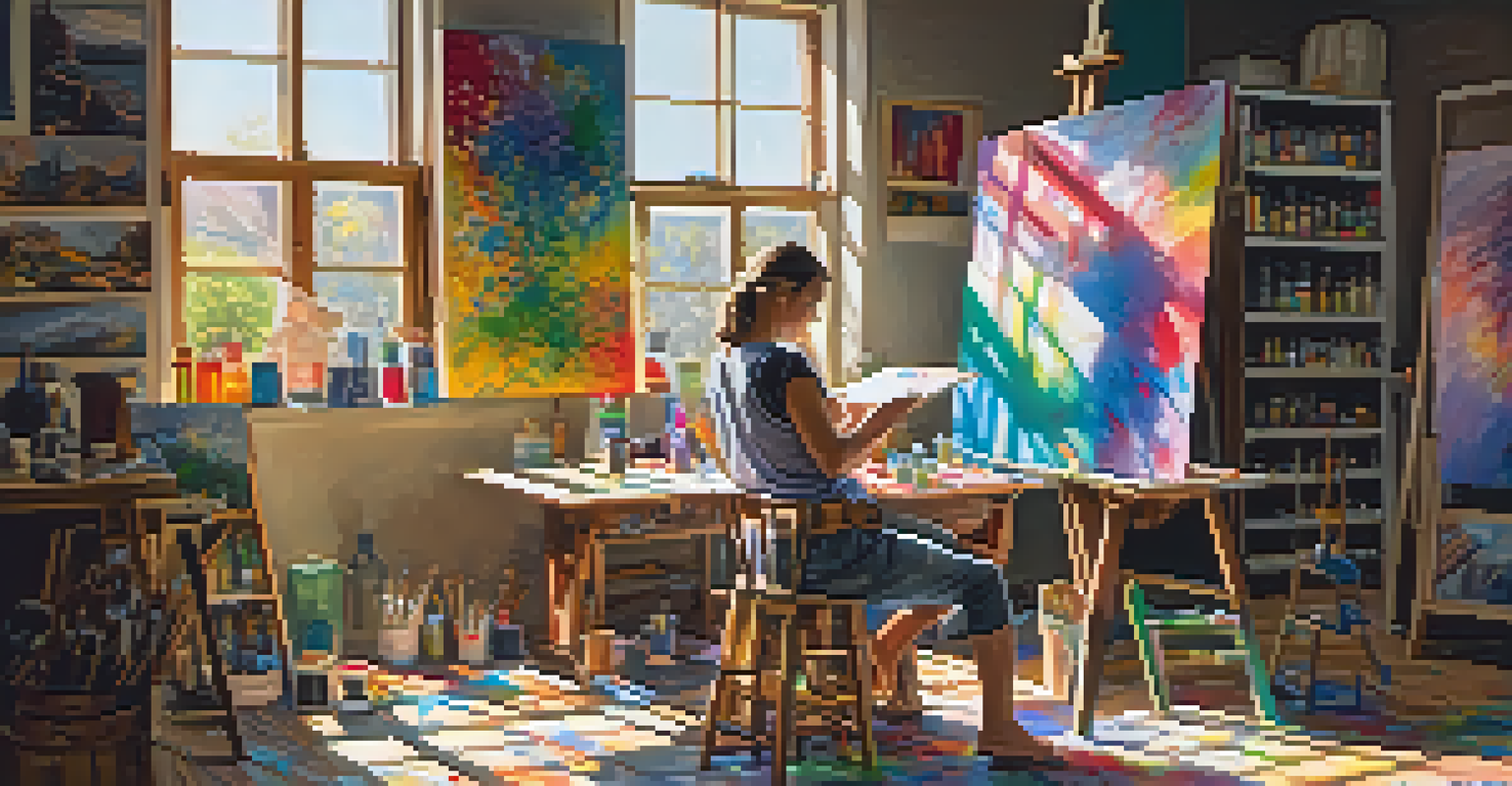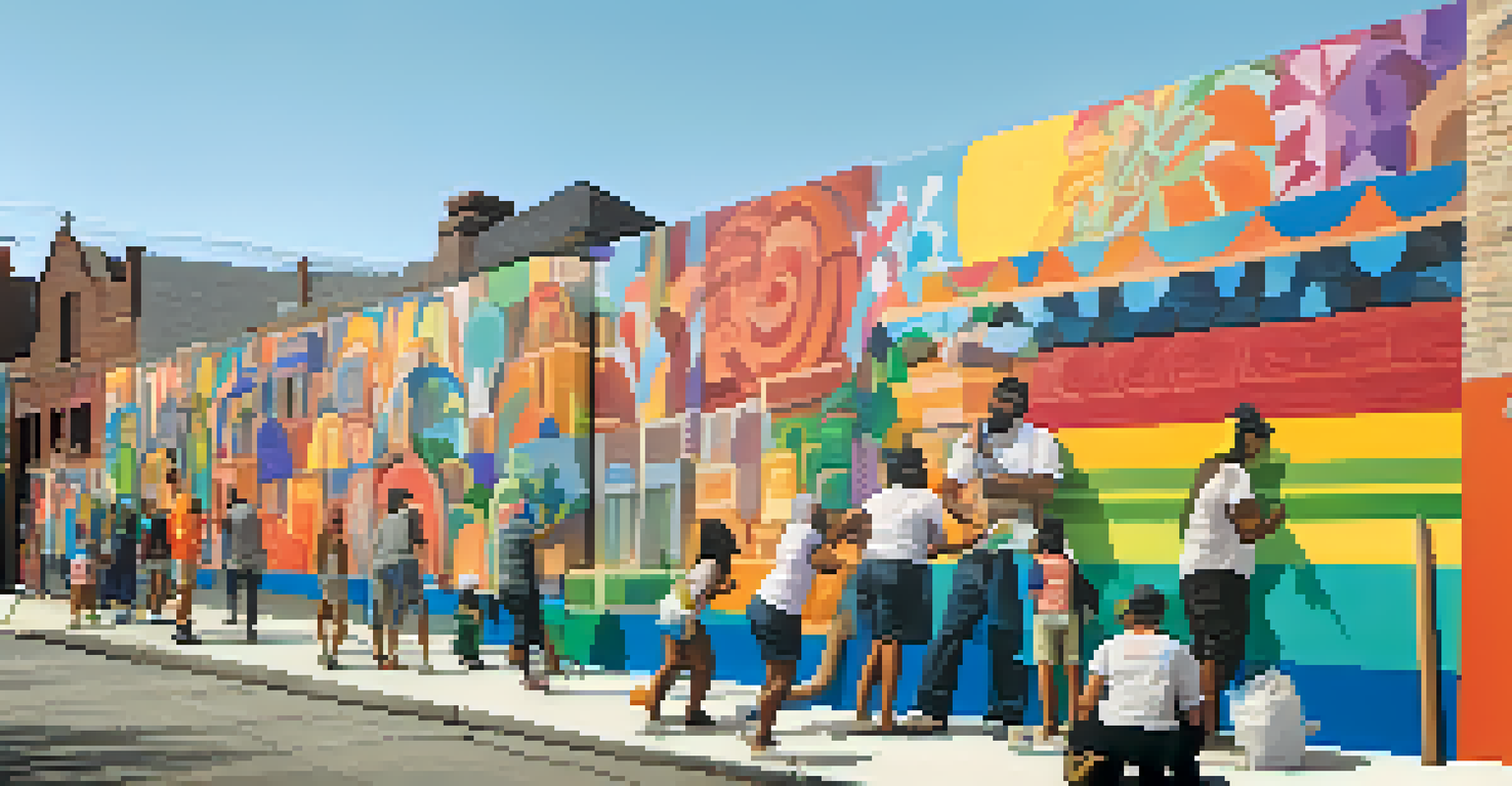Exploring Art's Role in Fostering Emotional Connection

Understanding Art’s Emotional Impact
Art has a unique ability to touch our emotions, often in ways that words cannot. From a haunting painting to a moving piece of music, art can evoke feelings of joy, sadness, nostalgia, and even anger. This emotional resonance is what makes art a powerful medium for expression and communication.
Art is not freedom from discipline, but disciplined freedom.
For instance, consider how a simple photograph of a loved one can bring back a flood of memories. The emotions tied to that image can transport us back to a specific moment, rekindling feelings of love or loss. This connection illustrates how art serves as a bridge to our innermost feelings.
Ultimately, understanding the emotional impact of art allows us to appreciate its role in our lives. It’s not just about aesthetics; it’s about the stories and emotions that each piece carries within it, making art a profound part of human experience.
Art as a Tool for Personal Reflection
Many people turn to art as a means of introspection, using creative expression to explore their own emotions. Whether through painting, writing, or music, the act of creating can be therapeutic. This personal reflection allows individuals to confront their feelings in a safe and constructive way.

For example, a person grappling with grief might find solace in writing poetry. The process of putting their feelings into words can be cathartic, helping them to make sense of their emotions. In this way, art becomes a personal diary, allowing for exploration and understanding.
Art Evokes Deep Emotions
Art has a unique ability to resonate with our emotions, acting as a bridge to our innermost feelings.
By engaging with art, individuals can not only express their feelings but also gain insights into their emotional states. This personal connection fosters a deeper understanding of oneself, making art a valuable tool for emotional growth.
Community and Connection Through Art
Art has a remarkable ability to bring people together, fostering a sense of community. Galleries, theaters, and public art installations serve as gathering spots where individuals from diverse backgrounds come together to share experiences. This shared appreciation for art can create lasting bonds between people.
Every artist dips his brush in his own soul, and paints his own nature into his pictures.
Consider community art projects, where local residents collaborate to create a mural. This collective effort not only beautifies a space but also strengthens relationships among participants. Everyone involved shares a piece of themselves, creating connections that might not have existed otherwise.
When people engage with art as a community, it cultivates a supportive environment. This sense of belonging is essential for emotional well-being, illustrating how art can serve as a unifying force in society.
Art Therapy: Healing Through Creativity
Art therapy is a specialized field that harnesses the power of art for emotional healing. Trained therapists guide individuals in using creative expression to explore and communicate their feelings. This therapeutic process can be particularly beneficial for those who struggle to articulate their emotions verbally.
For instance, a child facing anxiety may find it easier to express their fears through drawing rather than talking about them. This safe space allows them to process their emotions without the pressure of conventional conversation. It’s a powerful reminder that creativity can be a form of healing.
Art Fosters Community Connections
Engaging with art brings people together, creating a sense of belonging and strengthening community bonds.
Art therapy demonstrates how art can play a crucial role in mental health. By providing an outlet for expression, it enables individuals to confront and navigate their emotions, ultimately leading to greater emotional resilience.
Cultural Expression and Emotional Heritage
Art serves as a mirror to culture, reflecting the values, struggles, and emotions of a society. Through various forms of artistic expression, communities can share their histories and emotions, preserving cultural heritage for future generations. This connection to one’s roots can evoke feelings of pride and belonging.
Consider traditional dances or music passed down through generations. These art forms often carry deep emotional significance, telling stories of resilience, joy, or sorrow. Engaging with these cultural expressions allows individuals to connect with their heritage and understand their place within it.
By exploring cultural art, we can appreciate the diverse emotional landscapes of different communities. This exploration not only enriches our understanding of others but also deepens our empathy and emotional intelligence.
Art and Empathy: Understanding Others’ Emotions
One of the most profound roles of art is its ability to foster empathy. By engaging with stories, visuals, or performances from different perspectives, we can step into someone else’s shoes. This emotional engagement helps us understand and appreciate experiences that differ from our own.
For example, a poignant film depicting a marginalized community can evoke feelings of compassion and understanding. Viewers may come away with a greater awareness of the struggles faced by others, promoting empathy in a world that often feels divided.
Art Therapy Aids Emotional Healing
Art therapy provides a powerful outlet for emotional expression and healing, especially for those struggling to articulate their feelings.
Through art, we learn to recognize and validate the emotions of others. This shared emotional experience is crucial for building connections and fostering a more empathetic society.
The Future of Art and Emotional Connection
As we look to the future, the role of art in fostering emotional connection continues to evolve. With advancements in technology, new mediums such as virtual reality and interactive installations are emerging, providing fresh ways for people to engage with art. These innovations can deepen the emotional impact of artistic experiences.
For instance, virtual reality art installations allow viewers to immerse themselves in a narrative, experiencing emotions on a more visceral level. This immersive experience can create profound connections, transcending traditional boundaries and enhancing the emotional journey.

Ultimately, as art continues to adapt and grow, its capacity to foster emotional connections will remain a vital aspect of the human experience. Engaging with art will always be a powerful way to explore and share our emotions, building connections that enrich our lives.